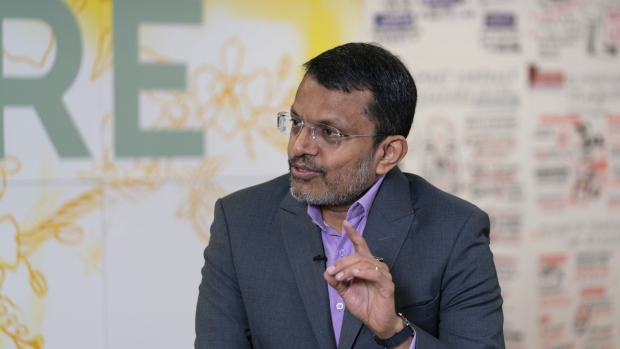Oct 3, 2022
MAS’s Menon, IMF Say Blended Finance Key to Climate Change Fight
, Bloomberg News

(Bloomberg) -- Singapore’s top central banker said blended finance is key to tackling climate change by earmarking more money for marginal environmental projects.
Ravi Menon said the annual flow of blended finance has been less than $10 billion since 2015, and a more coordinated approach is needed to make it mainstream. This type of funding typically involves development agencies, governments and philanthropic groups teaming up with traditional financial backers like banks or funds.
“Blended finance synergizes public and private capital to mobilize financing for projects that are marginally bankable,” Menon said at a transition finance conference in Singapore Tuesday. “We need to shift towards a portfolio approach to blended finance deals through the structuring and securitization of typically illiquid green and transition assets.”
The Monetary Authority of Singapore will inject seed capital into Asia climate solutions for feasibility studies and proof of concept work in underfunded sectors like clean energy access, early-stage adaptation technology, sustainable transport and nature-based solutions, the managing director said.
The world needs $3.3 trillion a year in energy-related investments through the rest of the decade if it hopes to reach net-zero carbon emissions by 2050, according to the International Monetary Fund.
“Blended finance, we talk a lot about it. We have to do more than just talk,” IMF Managing Director Kristalina Georgieva said at the same conference in Singapore. “It can play a role in risk sharing.”
For example, the public sector could offer first-loss guarantees to investors or provide credit enhancement to lower the risk to the private sector, she said.
“We must set a comprehensive climate policy to reallocate resources towards green and resilient investments,” Georgieva said. “Among those policies, one stands tall: Carbon pricing. It is a key tool to make polluters pay for the climate costs,” while promoting investments into low-carbon and energy-efficient projects.
Carbon pricing may seem difficult when energy costs are so high, she added, but when they drop, it would be a good time to put a price on carbon to help shift away from fossil fuels.
©2022 Bloomberg L.P.





